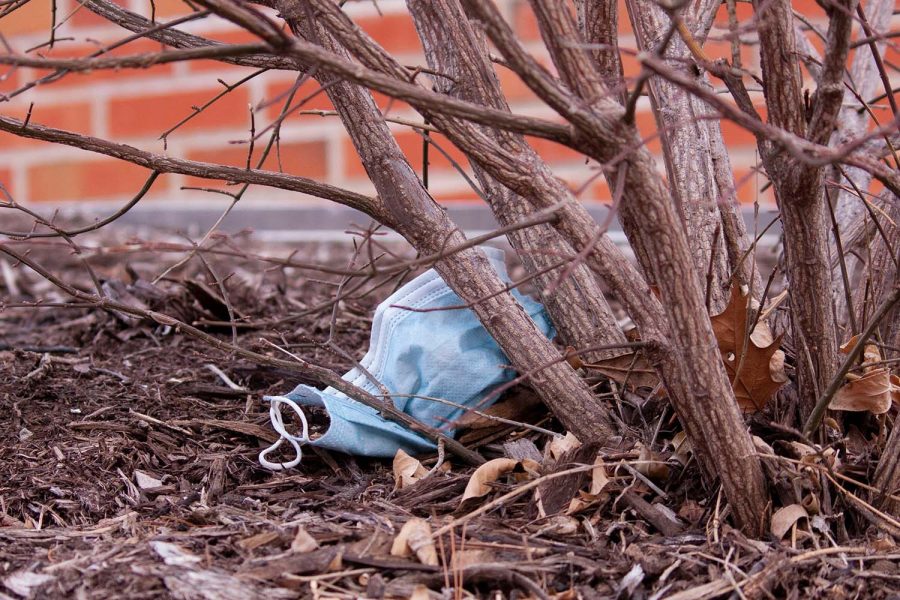Opinion | Mask pollution is an important subject to face
Mask litter is a trend that continues to show itself in our Iowa City community and is environmentally hazardous.
A disposable mask is seen on the University of Iowa campus in Iowa City on Feb. 10, 2022. Due to an increasing amount of disposable masks being found on campus, the Undergraduate Student Government looks towards more sustainable solutions.
March 3, 2022
Masks, whether we like them or not, have become a staple of life since spring 2020 — nearly two years ago. However, these facial permission-slips to the transit system are unfortunately tossed aside like a gum wrapper.
Masks lay on the floors of University of Iowa campus buildings, inside elevators, in the grass. They’re even on surfaces mere feet away from a trash bin.
Masks have become another typical trash item that can hurt the ecosystem. In fact, Science Daily said masks are a greater threat to the environment than plastic bags. This is due to the breakdown of microplastics. Face masks are made with microscopic plastic fibers, which break down quicker than the plastics found from bags, dissolving into the environment quicker.
Face masks can also contain heavy metals and disease-spreading microorganisms, due to all the bacteria we breathe out and accumulate on our masks.
Jennifer Jordan, resource manager superintendent for Iowa City, spoke on her encounters with mask litter.
“I would say we don’t generally see them as they’re in bagged trash,” Jordan said. “Personally, the bigger issue is, I see them blown all over, like, walking the dog, I see them in town, I see them in roadsides, I see them in trees. I think it’s much more of a litter issue… It’s not like we’re getting stacks of just masks.”
Jordan believes, however, that there are solutions.
“I think it’s like with any litter, you drop something, pick it up. I don’t think people are necessarily intentionally throwing them on the ground,” Jordan said. “I see a lot of people walking around with them on their wrists, hanging from a rear-view mirror where if the wind catches them, they probably didn’t mean to drop them. I think maybe the message there is just ‘be aware of where your mask is.’”
Wendy Moorehead, Assistant Director and Strategic Communications for Facilities Management, wrote in an email to The Daily Iowan about the efforts university staff take to handle mask litter.
“The landscape groundskeepers work diligently to pick up and dispose of masks, and any other litter, found on campus grounds,” Moorehead wrote. “While students, faculty, and staff make a good faith effort to dispose of their used masks responsibly in waste bins, some environmental factors like strong winds can undo these efforts.”
On Feb. 25 the Centers for Disease Control and Prevention announced new guidelines mask-wearing is optional for healthy people living in places with a low or medium COVID-19 community level. Johnson County is rated medium by the CDC as of March 3.
I can’t go a day without seeing masks ruining the aesthetics of Iowa City. They look so sad, crumpled up in that typical medical-blue color we are all used to seeing by now. Even worse, if the mask is torn up, pieces of it could be floating in the nearest river or becoming a deer’s lunch. We have already tainted the Earth with plastics and harmful chemicals.
Masks should be taken more seriously as a threat to our environment, even more so than any bag or can-ring, which are symbols of the evils of our pollution. Masks need to join that group so we can take them more seriously and be mindful where we throw away our masks.
Columns reflect the opinions of the authors and are not necessarily those of the Editorial Board, The Daily Iowan, or other organizations in which the author may be involved.














